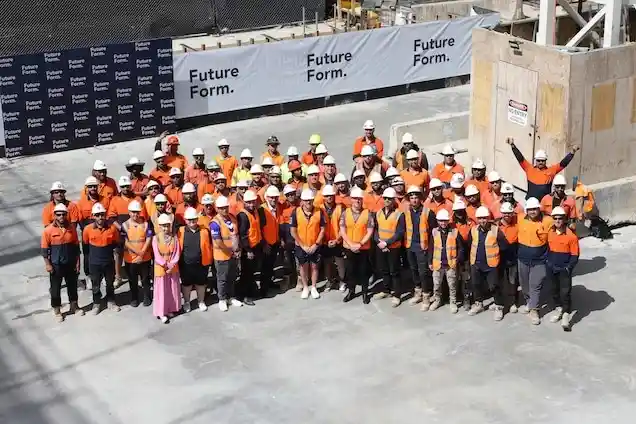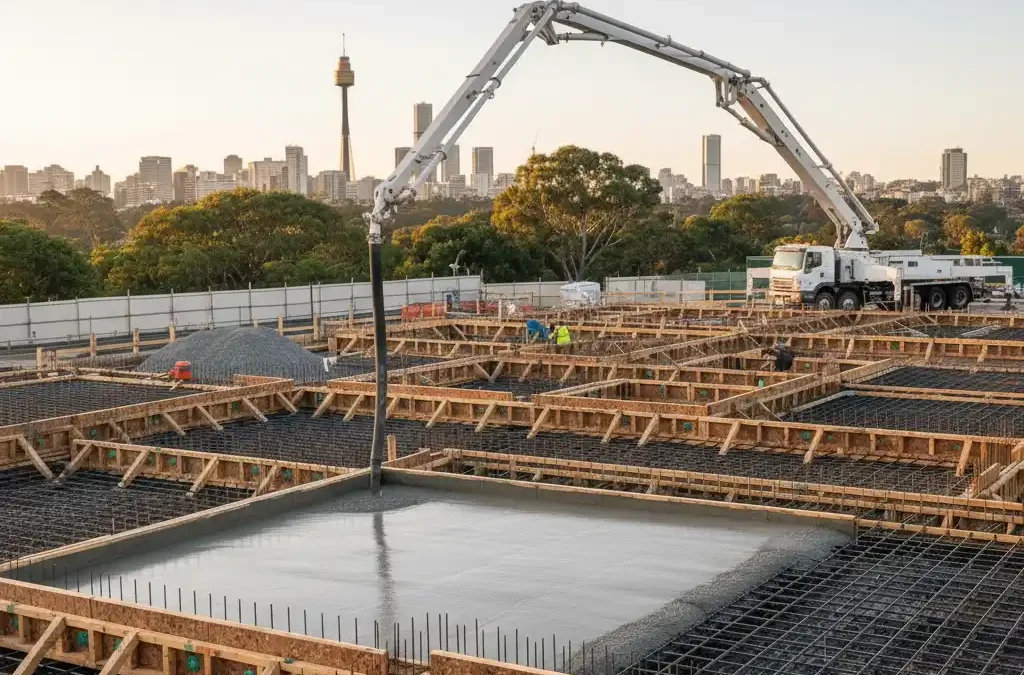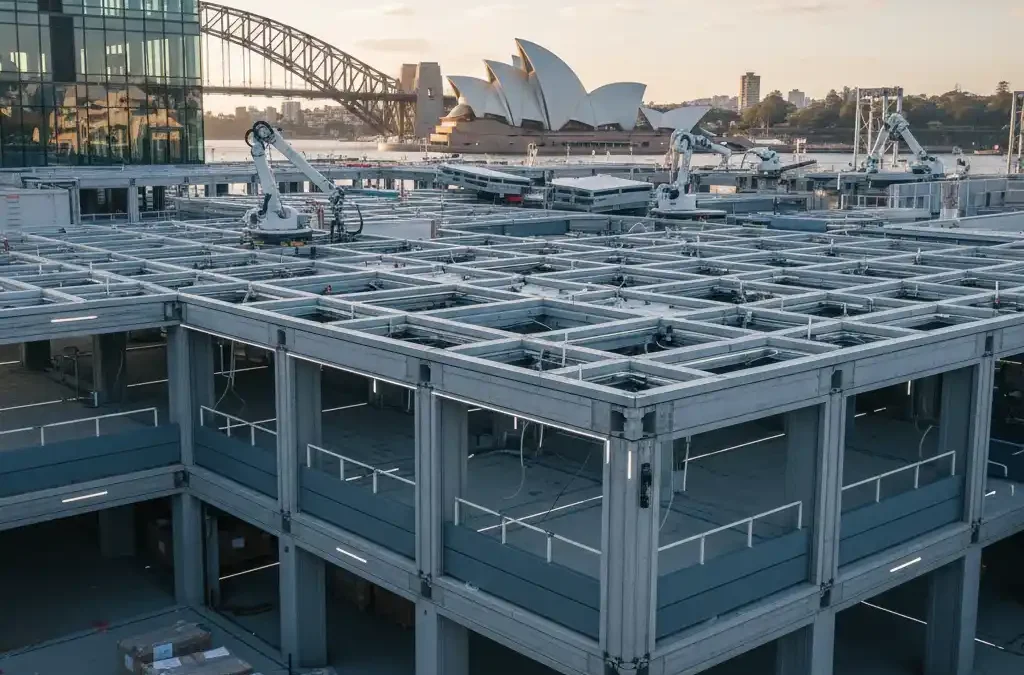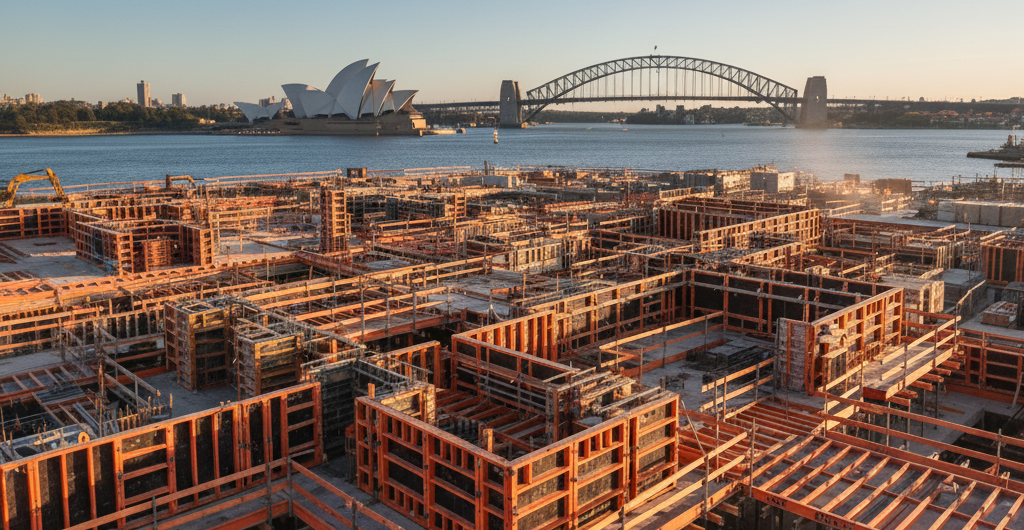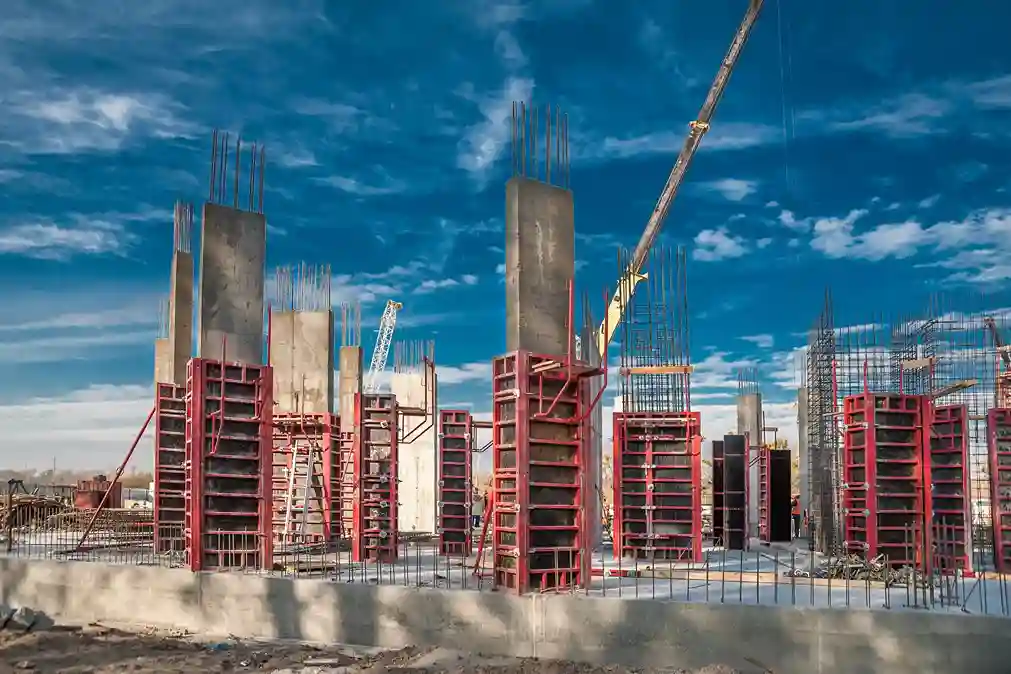
When you’re planning your next big project—be it a state-of-the-art apartment complex in Sydney’s North Shore or a flagship commercial precinct in Canberra—you’ll quickly discover that precision goes beyond mere aspiration. In fact, it’s absolutely crucial when it comes to high quality concrete formwork Australia. Get this right, and you’re on track for a structurally sound, time-efficient build. Get it wrong, and you could be looking at costly rework, reputational damage and frustrated stakeholders.
Concrete is more than just grey slabs; it’s the backbone of your building, defining everything from safety to longevity. In many countries, people produce millions of cubic metres of concrete every year. From the bustling highways of Western Sydney Metro Airport Terminal Station to landmark high-rises, concrete is the backbone of our built environment—it’s reliable, cost-effective and durable. But all that strength means little unless you can mould it precisely. That’s where high quality concrete formwork Australia comes in. Formwork isn’t simply a temporary shuttering system; it’s the critical framework that defines your structure’s final shape, load-bearing capacity and even its finish. Here’s why getting that framework spot-on from day one is essential, and how modern techniques—like digital modelling and Building Information Modelling (BIM)—can help you deliver a flawless outcome.
Why Concrete and Formwork Matter So Much
Concrete is a wonderfully versatile construction material, trusted for its strength, durability, and cost-effectiveness. Australia alone produces millions of cubic metres of concrete annually, underpinning everything from major infrastructure like Western Sydney Metro Airport Terminal to high-rise marvels like Brisbane’s Skytower.
But what ensures concrete’s durability and aesthetic appeal? Formwork. This crucial framework moulds and supports the concrete as it sets, ultimately shaping the structural integrity of your building from the very first pour.
The Risks of Poor Formwork
When formwork lacks precision, the consequences quickly compound:
Surface Defects and Aesthetic Flaws
You may complete a nine-storey apartment block only to discover pervasive pitting, honeycombing or hairline cracks that developers and end-users notice immediately. In many countries, the climate—where humidity and UV exposure can accelerate deterioration—these surface defects become more than cosmetic. Moisture can seep into voids, steel reinforcement can corrode, and you might find yourself revisiting costs for patching, re-plastering or even partial rebuilds. A single uneven patch can jeopardise council approval and affect property values..
Structural Weaknesses and Safety Risks
Even minor misalignments in formwork can compromise a structure’s load-bearing capacity. Imagine a mid-rise mixed-use tower, where improper bracing results in uneven slab thickness. Over time, that imbalance could translate into differential settlement or increased stress on columns—conditions nobody wants in a cyclone-prone region or an area prone to seismic tremors. Australian Standards (AS) demand strict compliance, and building insurers scrutinise every pour. A single failure in quality assurance can magnify liability premiums, drive up insurance costs and put your project at risk of work-safe investigations.
Delays, Rework and Blown Budgets
Beyond the immediate cost of repairing physical defects, poor formwork precision triggers a domino effect—delays in the construction schedule, rework labour, additional materials, and extended equipment hire. These disruptions can also affect coordination with other trades, inflate insurance liabilities, and ultimately damage reputations. The financial hit is not only felt on the current project but may ripple into future tendering opportunities.
Consider the recent issues faced by various construction projects across many countries where formwork inaccuracies led to extensive rework, costing millions and setting back deadlines significantly. The painful lessons learned? Precision saves money and reputation.
Precision Isn’t Optional—It’s Structural
To achieve precision, your approach to formwork needs meticulous planning and execution. At Future Form, we understand that the devil is in the details. Our in-house design team employs cutting-edge digital modelling and rigorous quality control protocols to guarantee precise alignment from the initial design stages right through to the final pour.
We leverage advanced BIM (Building Information Modelling) technology, ensuring that every aspect of your formwork aligns perfectly with your project’s architectural vision. The result? A flawless structural foundation from day one, which not only ensures structural integrity but also reduces material wastage, labour costs, and overall project timelines.
The Future Form Advantage: In-House Excellence
Formwork is no longer just about assembling panels—it’s about precision engineering, detailed planning, and innovative techniques. Modern construction demands rigorous attention to every component, which is exactly why high quality concrete formwork Australia builders depend on is crucial.
At Future Form, we don’t leave anything to chance. Our commitment to formwork precision is backed by extensive industry experience and innovation. Here’s how our in-house design and engineering teams make the difference:
Integrated Digital Modelling
Our teams utilise the latest formwork systems and advanced CAD and Building Information Modelling (BIM) software, guaranteeing accuracy down to the millimetre. This collaborative environment means we can identify clashes early (e.g., reinforcement intersecting with a concealed service run), adapt formwork details for complex geometries (like curved facades) and verify that the structure will load correctly once the concrete cures. In turn, this minimises onsite surprises and accelerates prefabrication of formwork panels, reducing material waste.
In-House Design and Engineering Expertise
Rather than rely on borrowed drawings or generic formwork plans, our dedicated design team translates your project’s unique requirements into precise formwork solutions. Whether it’s an exposed concrete finish for a boutique hotel lobby in Perth or a heavily loaded slab in an industrial warehouse near Adelaide, our engineers develop erection sequences, bracing schedules and deflection checks that align with AS 3610: Formwork for Concrete. That level of detail gives you the confidence that each pour will match the structural engineer’s intent and the architect’s finish expectations.
Proactive Quality Assurance and Site Support
Once design and fabrication are complete, our site teams conduct rigorous inspections at every critical juncture: panel alignment, weld checks on steel formwork, bracing adequacy, and adequacy of formwork accessories like corner blocks and walers. We document progress with digital checklists and photographic evidence. Should any deviation arise—say, a 5 mm millimetre misalignment—we address it immediately, before reinforcement goes in or concrete arrives. By comparing our scans against the Building Information Model (BIM) model, we can certify that the erected formwork is hitting tolerances consistently.
Real-World Case Studies: When Precision Pays Off
Across Australia, successful projects stand testament to the power of precision formwork:
Castle Residences, Sydney:
Castle Residences landmark CBD address highlights Future Form’s capability to deliver precise formwork, particularly showcased by the building’s intricate curved off-form dome facade and challenging cantilever over an adjoining heritage building. The design required innovative engineering solutions and an unwavering commitment to accuracy, ensuring the preservation of the adjoining heritage elements while achieving striking architectural form. Future Form’s expertise enabled seamless execution of complex geometries that might otherwise have introduced significant risk to both the budget and schedule.
88 Walker Street, North Sydney:
This prominent development, 88 Walker Street, the tallest tower in North Sydney, blends concrete and formwork meticulously to accommodate its ambitious mixed-use structure, including a 252-suite hotel and 24 levels of office space. The scale and complexity of the project required an integrated approach to ensure seamless transitions between different functional areas. Future Form’s team applied coordinated modelling and precise layout planning to deliver the structural formwork that would support the tower’s slender vertical profile. The successful outcome speaks to the power of formwork and concrete working together—not just as construction materials, but as coordinated systems that provide both structural strength and architectural coherence.
These examples highlight the tangible benefits—financially, structurally, and aesthetically—of investing in precise, quality formwork from day one.
Building Your Concrete and Formwork Confidence
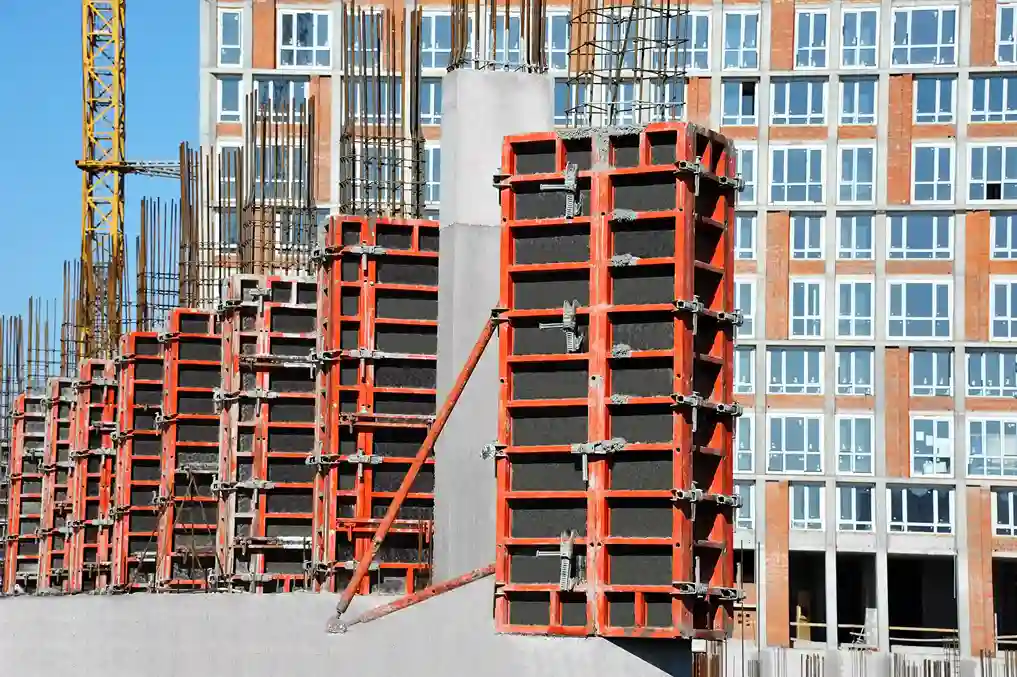
In today’s competitive construction landscape, achieving concrete confidence through precise formwork isn’t merely recommended—it’s essential. Future Form’s dedication to high quality concrete formwork Australia precision ensures your visionary property projects remain structurally sound, aesthetically pleasing, and economically viable from the outset. With a proactive approach, cutting-edge technology, and detailed planning, precision in formwork isn’t just a good practice; it’s the foundation upon which successful projects stand.
Future Form goes beyond just delivering exceptional formwork solutions—we partner with you to elevate your project from vision to reality. Our experienced in-house teams collaborate closely, harnessing innovative technologies and industry-leading practices to ensure each pour sets the stage for structural excellence. Let Future Form help you build confidently, efficiently, and precisely, transforming your next ambitious project into a landmark success.
References
Australian Bureau of Statistics. (2022). Construction Work Done, Australia. ABS. Retrieved from https://www.abs.gov.au/
Infrastructure Australia. (2021). Australian Infrastructure Audit 2021. Infrastructure Australia. Retrieved from https://www.infrastructureaustralia.gov.au/
Standards Australia. (2020). AS 3610: Formwork for Concrete. Standards Australia. Retrieved from https://www.standards.org.au/
Future Form. (2024). Projects. Retrieved from https://futureform.com.au/projects/


